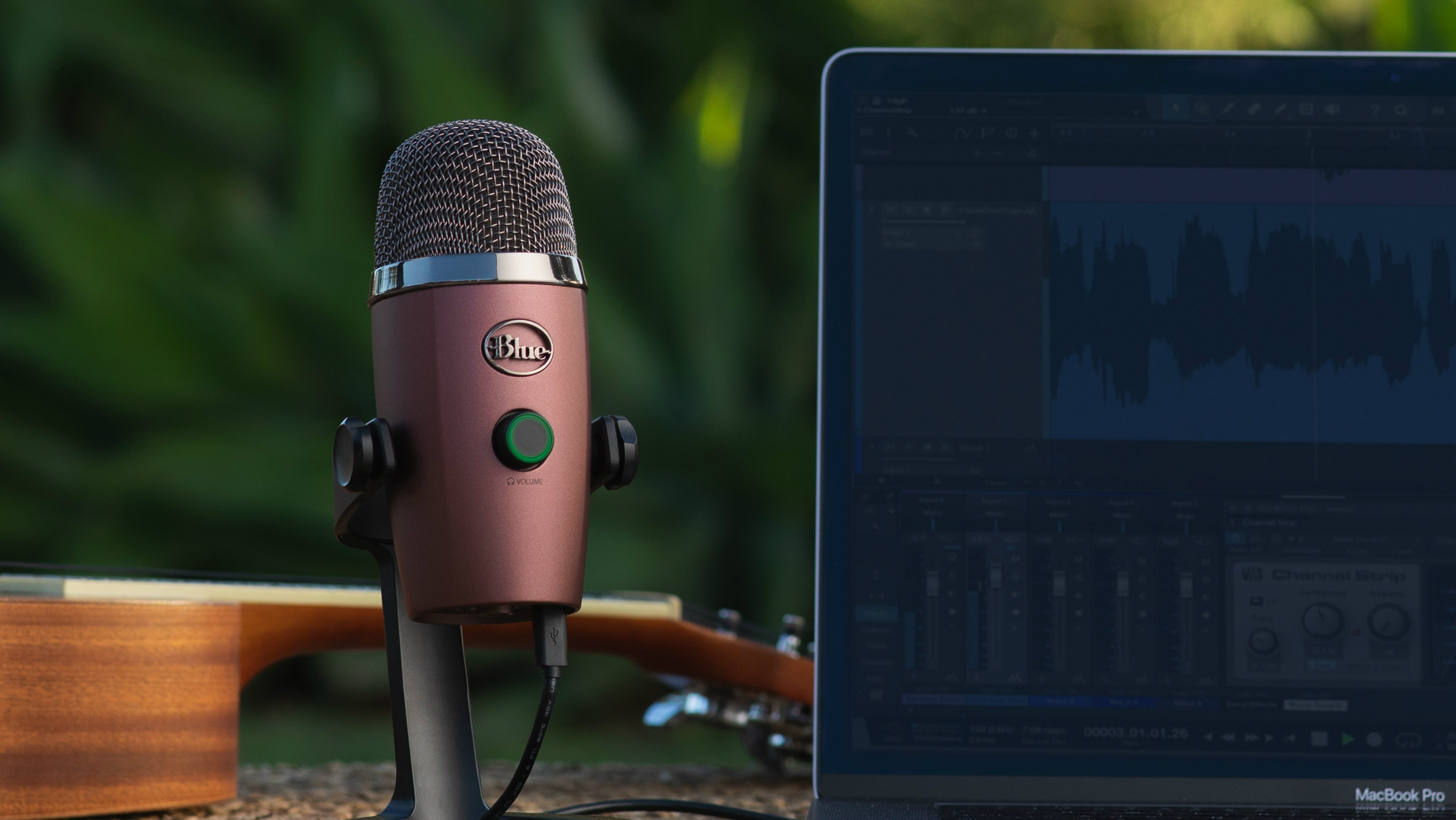Blue Yeti Nano microphone: should I buy it for podcasting?
No Bigfoot-print here

It feels like everyone and their grandma has a podcast these days - and with good reason. Podcasting can be a really fun and easy way to delve into the subjects you love the most, whether you’re a true crime buff or a poetry know-it-all.
That is, it’s easy if you have the right equipment. If you’ve recently looked for the best podcasting microphones online, you may have come across the Blue Yeti Nano.
If you’re not sure whether to go ahead and purchase this bitesize mic, read on for all the pros and cons of the Blue Yeti Nano. To be clear, we've not tested this model ourselves, so the following is our expert tech take based on the specs and online reviews - however, we have reviewed the original, larger Blue Yeti Microphone so we've got a pretty good point for comparison.
Good for beginners, great for your bank balance
The Blue Yeti Nano is one of the cheaper microphones you can buy for podcasting, at $99.99 (£89.99 / AU$159). Blue Yeti hasn’t sacrificed many of the features you’d expect from a professional podcasting mic for this price however, and it should provide a pretty high standard in terms of audio quality and clarity.
This condenser mic has two polar patterns; cardioid (heart-shaped) and omni-directional; the former is best for solo broadcasts, whereas you’ll want to use the latter for roundtable style discussions as the mic will pick up audio in 360 degrees.
The omni-directional setting is also good for conference calls with multiple people in one room.
It supports hi-res 24-bit recording, so your podcasts should sound a lot better than using your laptop's inbuilt microphone, and it’s compatible with Mac and PC via USB.
Sign up for breaking news, reviews, opinion, top tech deals, and more.
The Blue Yeti Nano also comes with the Blue Sherpa companion app so you can easily switch between different polar patterns and adjust the gain - although you can do this by pressing a button on the mic itself anyway.
Increasing the gain will make your voice sound louder, and lowering it will make it quieter, with a lower gain reducing the risk of your audio peaking (this is when the volume is too high and causes distortion.)
Does size matter after all?
Check out TechRadar's exhaustive guides to the best headphones, including the best over-ear headphones, best on-ear headphones and the best in-ear headphones.
For some more specialist pairs, take a look at our guides to the best wireless headphones, best true wireless earbuds, best wireless earbuds, and the best noise-cancelling headphones.
Need a specific brand? We have guides to the best Sony headphones, the best Bose headphones, and the best Audio-Technica headphones.
Looking for some headphones you can work out with? Check out our guide to the best swimming headphones and the best running headphones.
As you’ve probably guessed already, the Blue Yeti Nano is small - that means if you’re on the taller side, you may end up hunching over your desk to speak into the microphone, which we can’t imagine will be very comfortable for long periods of time.
You can buy an additional shock mount or boom mount, but they’ll set you back around $50 (£38 / AU$70) or $100 ( £77 / AU$140) respectively.
It’s probably easiest to compare the Blue Yeti Nano to its closest relative, the original Blue Yeti Microphone, which comes in at $129.99 (around £100 / AU$180), and the main difference between the two (aside from the size), is that the Nano model doesn’t support stereo or bidirectional modes (so you won’t be able to sit across the table from your podcasting buddy).
We found that the original Blue Yeti Microphone had a fantastic level of audio quality, although we found that you might want to invest in a pop shield as it is quite sensitive - a pop shield is a small mesh screen you place between your mouth and the microphone, and it stops the peaking effect you get when you make 'b' or 'p' sounds with your mouth.
As the specs are fairly similar with the Blue Yeti Nano, it could be worth investing in a pop shield - you can buy a decent one for around $12 (£10 / AU$18).

Should I buy the Blue Yeti Nano?
As the price is fairly cheap compared to similar models, the Blue Yeti Nano should be a great option for those starting out with podcasting, vlogging, or streaming gameplay - and for under $100, you get a lot of quality features.
The specs suggest a real ease of use, as you can simply plug in this microphone and start recording straight away without needing to fine tune myriad settings.
If you desperately want bi-directional/stereo recording, you could be better off with the original Blue Yeti, or for professional standard recording, try the Blue Yeti Pro.

Olivia was previously TechRadar's Senior Editor - Home Entertainment, covering everything from headphones to TVs. Based in London, she's a popular music graduate who worked in the music industry before finding her calling in journalism. She's previously been interviewed on BBC Radio 5 Live on the subject of multi-room audio, chaired panel discussions on diversity in music festival lineups, and her bylines include T3, Stereoboard, What to Watch, Top Ten Reviews, Creative Bloq, and Croco Magazine. Olivia now has a career in PR.